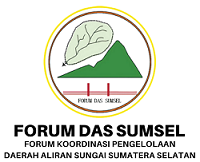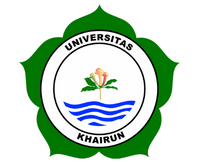Identification of the Effect of Water Stress on Yield Production and Evaluation of the Nutrient Content of Garut Tubers and Flour
Abstract
Arrowroot tubers (Maranta Arundinace L.) are a tuber plant that has potential as a source of carbohydrates. Arrowroot tuber plants have the potential to adapt well to various environmental conditions including water stress. The aim of this research was to identify the effect of water stress on yield production (number, weight, length and diameter) and evaluate the nutritional content of arrowroot tubers. This research used a Completely Randomized Design (CRD) with 7 water stress treatments, namely (P1) 15 days of waterlogging, (P2) 10 days of waterlogging, (P3) 5 days of waterlogging, (P4) daily watering, (P5) watering every 5 days, (P6) watering every 10 days, and (P7) watering every 15 days which was repeated in 2 experimental repetitions and 2 measurement repetitions. The results of the research showed that there was no decrease in yield in treatments P1 to P3, however in treatments P6 and P7 there was a difference in the yield of lower tuber weight compared to the daily watering treatment (P4) and the once every 5 days watering treatment (P5). Treatment The results of proximate analysis of arrowroot tubers with the best yield production (P5) showed that the water, ash, fat, protein and carbohydrate content of fresh tubers were respectively 69.82%, 1.47%, 0.21%, 0, 45% and 28.15%, while arrowroot flour is 2.28%, 4.77%, 0.33%, 1.47% and 91.16%. The results of this research provide information that arrowroot plants can be planted on land that has the potential to be flooded during the arrowroot growing season, but arrowroot plants require sufficient water to optimize their production. The high carbohydrate content of arrowroot tubers reflects its potential as an alternative food source to replace wheat and rice.
Keywords
Full Text:
PDFReferences
Anggun. 2017a. “Pengaruh jarak tanam dan pupuk N,P,K terhadap pertumbuhan dan hasil garut (Maranta arundinacea L.)”. Agrotech. Res. J., 1(1,2): 33–38.
Badrudin, U., Jazilah, S., dan Setiawan, A. 2011. “Upaya peningkatan produksi mentimun (Cucumis sativus L.) melalui waktu pemangkasan pucuk dan pemberian pupuk posfat”. Jurnal Online Universitas Pekalongan. Vol. 20 No.1 hal. 18-28.
Bahri, H.A.S. 2014. Pengujian dosis dan frekuensi pemupukan urea terhadap pertumbuhan tanaman garut (Maranta arundinaceae L.). Journal of Chemical Information and Modeling, Vol. 27 No.1 hal. 242–247.
Brito, V., Godoy-Casagrande, V., Narcisa-Oliveira, J., Tomielis, I., Cereda, M., Steinfort, U., and Costa, R. 2019. “Phenological stages of arrowroot (Maranta arundinacea L.) according to the Biologische Bundesanstalt Bundessortenamt und Chemische Industrie scale. Annals of Applied Biology. 175(1): 119-128. https://doi.org/10.1111/aab.12509
Darwis, S., Suaib, S., Boer, D., dan Yusuf, D.N. 2021. “Pertumbuhan dan hasil ubijalar (Ipomoea batatas L.) yang diberi pupuk kandang sapi pada lahan masam”. Jurnal Agrotek Tropika. 9(3): 553. https://doi.org/10.23960/jat.v9i3.5435
Djaafar, T.F., Sarjiman, dan Pustika, A.B. 2010. “Pengembangan budi daya tanaman garut dan teknologi pengolahannya untuk mendukung ketahanan pangan”. Jurnal Litbang Pertanian, Vol. 29 No.1, hal. 25–33 .
Feliana, F., Laenggeng, A.H., dan Dhafir, F. 2014. Kandungan gizi dua jenis varietas singkong (manihot esculenta) berdasarkan umur panen di desa siney kecamatan tinombo selatan kabupaten parigi moutong. Jurnal E-Jipbiol, 2(3), 1–14.
Fillamajor, F., and Jukema. 1996. “Marantha arundinacea l. plant resources of south-east asia no. 9, plants yielding non-seed carbohydrates”. Kew Bulletin, 54(4): 1011-1012. https://doi.org/10.2307/4111188
Handayani, T., Wijayanto, N., dan Wulandari, A.S. 2019. “Analisis pertumbuhan mindi (Melia azedarach L.) dan produktivitas umbi garut (Maranta arundinacea dan Maranta linearis L.) dalam sistem agroforestry”. Journal of Tropical Silviculture. 9(2): 144-150. https://doi.org/10.29244/j-siltrop.9.2.144-150
Han, H., Pan, R., Buitrago, S., Abou-Elwafa, S.F., Peng, Y., Liu, Y., Zhang, W.Y., and Yang, X.S. 2021. “The physiological basis of genotypic variations in low-oxygen stress tolerance in the vegetable sweet potato”. Russian Journal of Plant Physiology. 68: 1236-1246. https://doi.org/10.1134/S1021443721060054
Hidayati, N., Sukamto, L.A., dan Juhaeti, T. (2012). “Pengujian ketahanan kekeringan pada tanaman garut (Maranta arundinacea L.) hasil mutasi dengan radiasi sinar gamma”. Jurnal Biologi Indonesia, Vol. 8 hal. 2, hal. 303-315.
Kuncari, E.S. (2022). “Nutrition value and phytochemical screening of gembolo (Dioscorea bulbifera L.) bulbils and tubers from bogor, west java”. Jurnal Ilmu Pertanian Indonesia. 28(1): 18-25. https://doi.org/10.18343/jipi.28.1.18
Mahdalena, Z. 2020. “Pengaruh tingkat kekeringan terhadap pertumbuhan generatif kultivar kacang tunggak (Vigna unguiculata L)”. Ziraa’Ah Majalah Ilmiah Pertanian. 45(3): 347-353. https://doi.org/10.31602/zmip.v45i3.3449
Mudhor, M. A., Dewanti, P., Handoyo, T., dan Ratnasari, T. 2022. “Pengaruh cekaman kekeringan terhadap pertumbuhan dan produksi tanaman padi hitam varietas jeliteng”. Agrikultura, 33(3): 247-256. https://doi.org/10.24198/agrikultura.v33i3.40361
Nahrudin, dan Isnaeni, S. 2022. “Respons karakteristik agronomi, fisiologi, dan biokimia padi (Oryza sativa L.) tercekam salinitas dengan umur bibit berbeda”. Agromix, Vol. 13 No.1, hal. 118–125.
Novitasari, E., Ernawati, R., Lasmono, A., Ramadhani, T. N., dan Meithasari, D. 2022. “Komposisi kimia tepung dan pati umbi ganyong dan garut koleksi kebun sumber daya genetik natar, Lampung Selatan”. Prosiding Seminar Nasional Lahan Suboptimal Ke-10, 6051, 929-936 hal.
Nurchaliq, A., Baskara, M., dan Suminarti, E. (2014). “Pengaruh jumlah dan waktu pemberian air pada pertumbuhan dan hasil tanaman talas (Colocasia esculenta (L.) Schott var. Antiquorum)”. Jurnal Produksi Tanaman, Vol. 2 No.5, hal. 354-360.
Nurdjanah, S., Susilawati, Hasanudin, U., dan Anitasari, A. 2019. “Pengaruh varietas dan umur panen terhadap sifat fisikokimia umbi kayu manis (Manihot esculenta Crantz) asal Kecamatan Palas, Kabupaten Lampung Selatan. Lampung: Skripsi Universitas Lampung.
Oktafani, M.B. 2017. “Hasil garut (Marantha Arundinaceaea) pada kekeringan. Agrotechnology Research Journal, Vol. 1 No.2, hal. 29-32.
Paramita. (2018). “Identifikasi kandungan gizi tepung umbi-umbian lokal Indonesia”. Seminar Nasional 2011 “Wonderful Indonesia”, 51(1), 51 hal.
Prabowo, A.Y., Teti, E., dan Indria, P. 2014. “Gembili (Dioscorea esculenta L.) as food contain bioactive compounds: a review. Jurnal Pangan dan Agroindustri, Vol. 2 No. 3: 129-135.
Rohandi, A., Budiadi, Hardiwinoto, S., dan Harmayani, E. (2018). “Karakterisasi agroekologi dan daya adaptasi tanaman garut (Maranta arundinacea L.) pada sistem agroforestri di Kabupaten Garut. Yogyakarta: Disertasi Universitas Gadjah Mada.
Rohmah, E.A., Saputro, B., Biologi, J., Matematika, F., Alam, P., Teknologi, I., dan Nopember, S. 2016. “Pengaruh genangan terhadap kedelai”. Sains Dan Seni ITS, Vol. 5 No.2, hal. 29–33.
Rusmana, R., Ritawati, S., Ningsih, E.P., dan Kurnia, S. 2020. “Pengaruh genangan dan pupuk nitrogen terhadap pertumbuhan dan hasil tanaman kedelai”. Prosiding Seminar Nasional Lahan Suboptimal Ke-8 Tahun 2020, 914–923 hal.
Suhartini, T., dan Hadiatmi. (2011). “Keragaman karakter morfologis garut (Marantha arundinaceae L.). Buletin Plasma Nutfah, Vol. 17 No.1, hal. 12–18.
Surmaini, E., Runtunuwu, E., dan Las, I. 2015. “Upaya sektor pertanian dalam menghadapi perubahan iklim”. Jurnal Penelitian, Vol. 98, hal. 1–7.
Susilawati, Suwignyo, R.A., Munandar, dan Hasmeda, M. 2018. “Karakter agronomi dan fisiologi varietas cabai merah pada kondisi cekaman genangan”. Jurnal Agronomi Indonesia, 40(3): 196-203. https://doi.org/10.24831/jai.v40i3.6826
Wahjuningsih, S.B., and Susanti, S. 2018. “Chemical, physical, and sensory characteristics of analog rice developed from the mocaf, arrowroof, and red bean flour”. IOP Conference Series: Earth and Environmental Science, 102(1). https://doi.org/10.1088/1755-1315/102/1/012015
Wahyurini, E., dan Susilowati. 2020. “Induksi tunas umbi garut (Maranta arundinacea) dengan penambahan 2,4 D dan benzil adenin secara in vitro”. Agrivet, Vol. 26 No.1, page 43-49.
Wijayanti, A. dan Harijono. 2015. “Pemanfaatan tepung garut (Marantha arundinaceae l.) sebagai bahan pembuatan edible paper dengan penambahan sorbitol. Vol. 3, No. 4, hal. 1367-1374.
Winarno. 2002. “Kimia pangan dan gizi. Jakarta: PT. Gramedia Pustaka Utama. 245 hal.
Yulianti, U. dan Yefriwati, Y. 2020. “Pengaruh jarak tanam terhadap pertumbuhan dan umbi tanaman kentang (Solanum tuberosum L.) di balai pengkajian teknologi pertanian Sumetera Barat. Hortuscoler, 1(2): 40–47. https://doi.org/10.32530/jh.v1i02.254
Zhao, T., Pan, X., Ou, Z., Li, Q., and Zhang, W. 2022. “Comprehensive evaluation of waterlogging tolerance of eleven canna cultivars at flowering stage”. Scientia Horticulturae. 296. https://doi.org/10.1016/j.scienta.2022.110890
DOI: https://doi.org/10.32502/jgsa.v4i1.6954
Refbacks
- There are currently no refbacks.
Indexed by:
Journal of Global Sustainable Agriculture
Diterbitkan oleh Fakultas Pertanian, Universitas Muhammadiyah Palembang
Contact Person:
Rika Puspita Sari, M.Si (+62 813-7490-0341)
Klinik Publikasi Pertanian
Faculty of Agriculture, Universitas Muhamamdiyah Palembang
JL. Jend. A. Yani 13 Ulu Palembang, South Sumatra, Indonesia
Tel. (+62)711-511731; Email: kppfpump@gmail.com; Website: https://jurnal.um-palembang.ac.id/JGSA

This work is licensed under a Creative Commons Attribution 4.0 International License.







1.png)

13.png)





